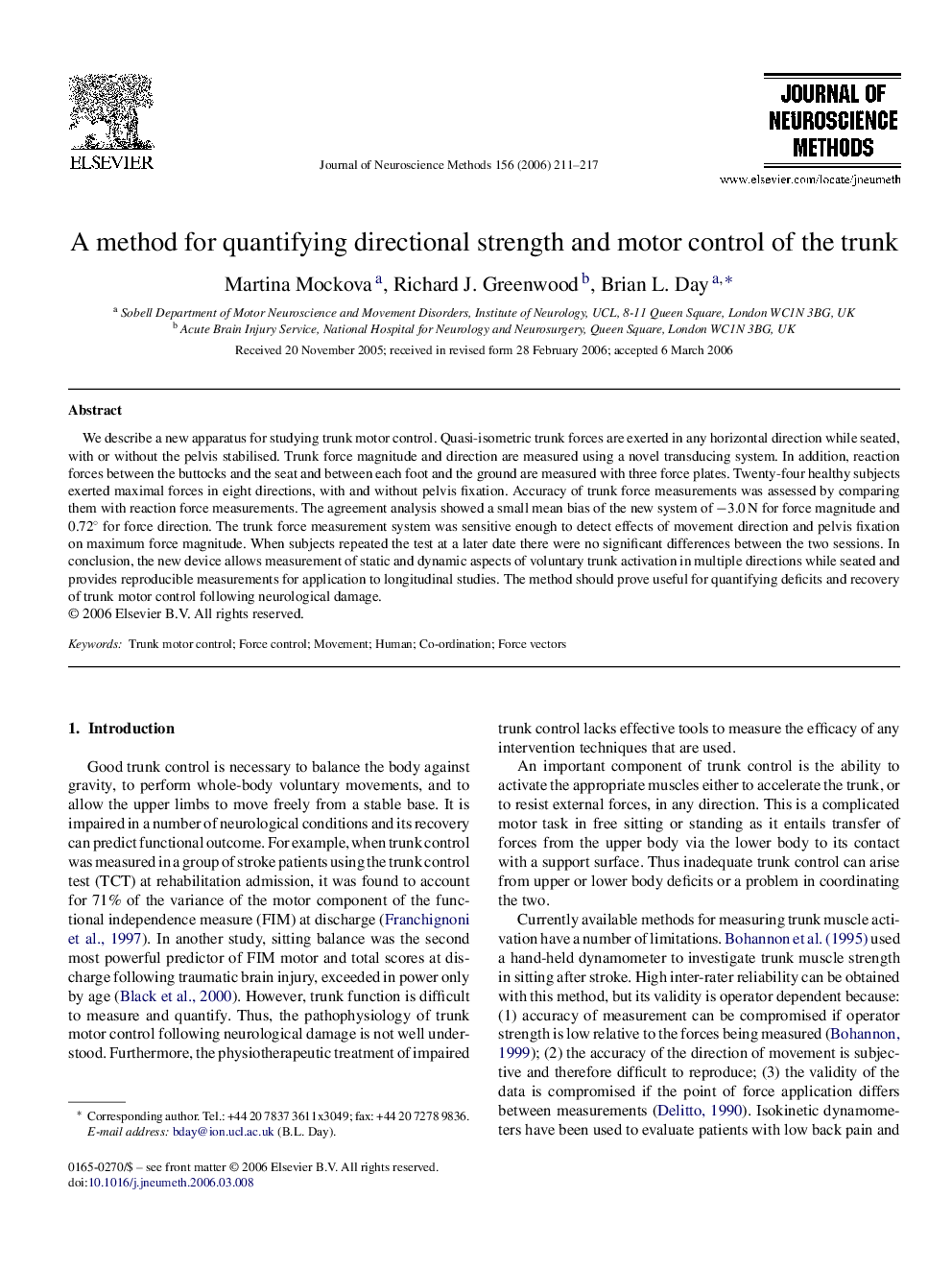| کد مقاله | کد نشریه | سال انتشار | مقاله انگلیسی | نسخه تمام متن |
|---|---|---|---|---|
| 4337118 | 1614658 | 2006 | 7 صفحه PDF | دانلود رایگان |

We describe a new apparatus for studying trunk motor control. Quasi-isometric trunk forces are exerted in any horizontal direction while seated, with or without the pelvis stabilised. Trunk force magnitude and direction are measured using a novel transducing system. In addition, reaction forces between the buttocks and the seat and between each foot and the ground are measured with three force plates. Twenty-four healthy subjects exerted maximal forces in eight directions, with and without pelvis fixation. Accuracy of trunk force measurements was assessed by comparing them with reaction force measurements. The agreement analysis showed a small mean bias of the new system of −3.0 N for force magnitude and 0.72° for force direction. The trunk force measurement system was sensitive enough to detect effects of movement direction and pelvis fixation on maximum force magnitude. When subjects repeated the test at a later date there were no significant differences between the two sessions. In conclusion, the new device allows measurement of static and dynamic aspects of voluntary trunk activation in multiple directions while seated and provides reproducible measurements for application to longitudinal studies. The method should prove useful for quantifying deficits and recovery of trunk motor control following neurological damage.
Journal: Journal of Neuroscience Methods - Volume 156, Issues 1–2, 30 September 2006, Pages 211–217